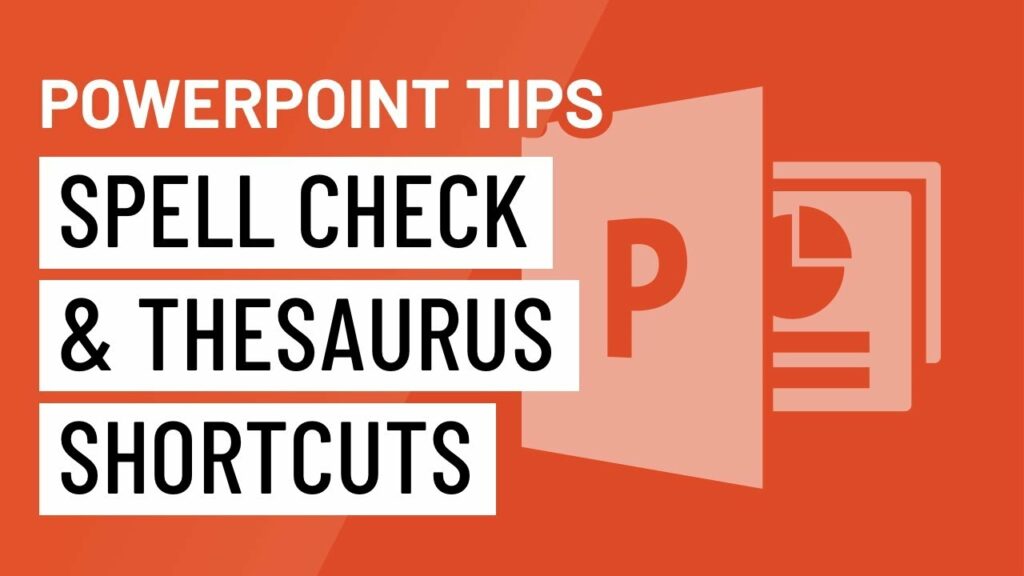Mastering Presentation Perfection: A Comprehensive Guide to Spell Check and Thesaurus Shortcuts in PowerPoint

Creating a flawless and engaging presentation is essential for effectively conveying your message to your audience. Whether you’re delivering a business proposal, an academic lecture, or a sales pitch, the quality of your presentation can significantly impact its success. To ensure accuracy and clarity, Microsoft PowerPoint offers powerful built-in tools for spell checking and accessing a thesaurus. In this extensive guide, we’ll explore the ins and outs of spell check and thesaurus shortcuts in PowerPoint, empowering you to elevate the quality of your presentations to new heights.
The Importance of Spell Check and Thesaurus Tools:
In the fast-paced world of presentations, errors in spelling or word choice can undermine your credibility and detract from the effectiveness of your message. By leveraging the spell check and thesaurus tools in PowerPoint, you can:
- Ensure Accuracy: Detect and correct spelling errors, typos, and grammatical mistakes to maintain professionalism and accuracy in your presentation.
- Enhance Clarity: Access synonyms and alternative words to improve the clarity and impact of your message, ensuring that your audience understands your content effectively.
- Save Time: Streamline the proofreading and editing process by using shortcuts and built-in features to identify and correct errors efficiently.
Using Spell Check in PowerPoint:
Spell check in PowerPoint allows you to review and correct spelling errors in your presentation quickly. Here’s how to access and utilize the spell check feature:
1. Click on Review Tab:
- Open your presentation in PowerPoint and navigate to the Review tab in the ribbon at the top of the window.
2. Initiate Spell Check:
- In the Proofing group, click on the Spelling button.
- PowerPoint will begin scanning your presentation for spelling errors and display suggestions for corrections.
3. Review Suggestions:
- As PowerPoint identifies potential spelling errors, it will display suggestions for corrections in a dialog box.
- Review each suggestion and choose the appropriate action, such as accepting the correction, ignoring the error, or adding the word to the dictionary.
4. Complete Spell Check:
- Once you’ve reviewed and corrected all spelling errors in your presentation, PowerPoint will notify you that the spell check is complete.
Utilizing Thesaurus Shortcuts in PowerPoint:
The thesaurus feature in PowerPoint allows you to explore alternative words and synonyms to enhance the clarity and variety of your presentation. Here’s how to access and use the thesaurus feature:
1. Select the Word:
- Highlight the word for which you want to find synonyms or alternatives in your presentation.
2. Open the Thesaurus:
- Right-click on the selected word to open the context menu.
- In the context menu, select Synonyms to display a list of synonyms for the selected word.
3. Choose Alternative Words:
- Review the list of synonyms provided by PowerPoint and choose the word that best fits the context of your presentation.
- Click on the desired synonym to replace the selected word in your presentation.
Keyboard Shortcuts for Spell Check and Thesaurus:
To expedite the process of spell checking and accessing the thesaurus in PowerPoint, you can use keyboard shortcuts:
- Spell Check Shortcut: Press F7 on your keyboard to initiate spell check in PowerPoint quickly.
- Thesaurus Shortcut: Select a word in your presentation and press Shift + F7 to open the thesaurus and explore alternative words and synonyms.
Best Practices for Proofreading and Editing:
To maximize the effectiveness of spell check and thesaurus tools in PowerPoint, consider the following best practices:
- Proofread Carefully: Take the time to review your presentation thoroughly for spelling errors, typos, and grammatical mistakes.
- Use Context: When selecting alternative words from the thesaurus, consider the context of your presentation and choose words that enhance clarity and coherence.
- Customize Settings: Explore PowerPoint’s proofing settings to customize spell check preferences, such as language preferences and autocorrect options.
- Seek Feedback: Share your presentation with colleagues or peers for review and feedback to identify any errors or areas for improvement.
- Practice Consistently: Develop a habit of using spell check and thesaurus tools regularly to ensure the accuracy and professionalism of your presentations.
Conclusion:
Spell check and thesaurus shortcuts in PowerPoint are invaluable tools for enhancing the quality and effectiveness of your presentations. By leveraging these built-in features, you can ensure accuracy, clarity, and professionalism in your slideshows, ultimately delivering a more impactful and engaging presentation experience for your audience. Whether you’re proofreading for spelling errors or seeking alternative words to improve clarity, mastering the spell check and thesaurus shortcuts in PowerPoint empowers you to create presentations that leave a lasting impression. So, the next time you prepare to deliver a PowerPoint presentation, remember to harness the power of these tools to elevate the quality of your content and communicate your message with confidence and precision.







